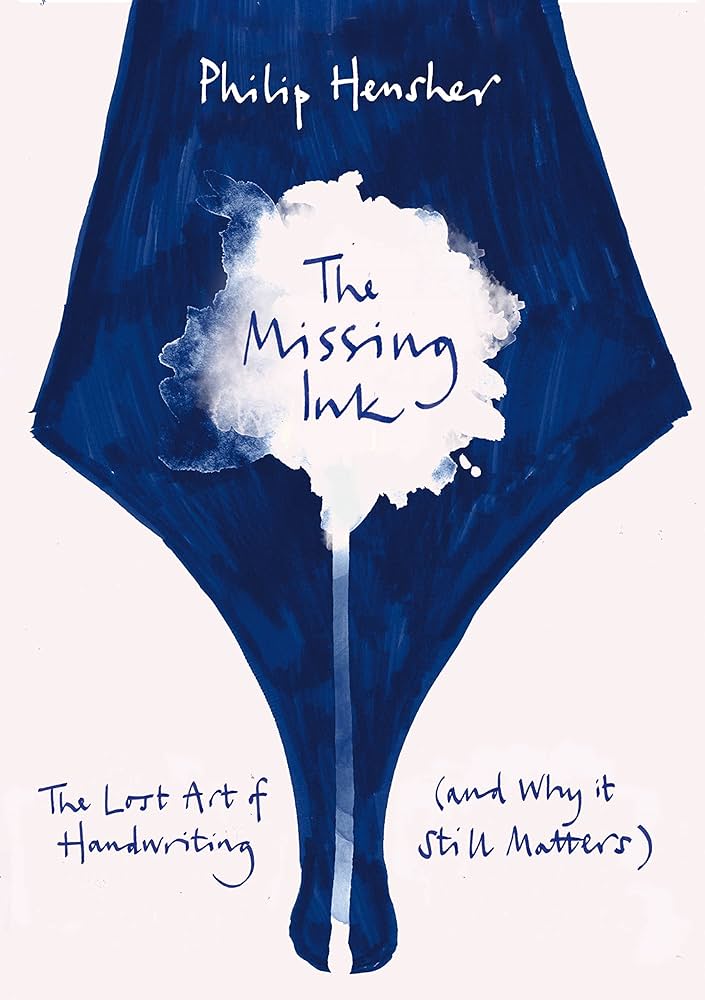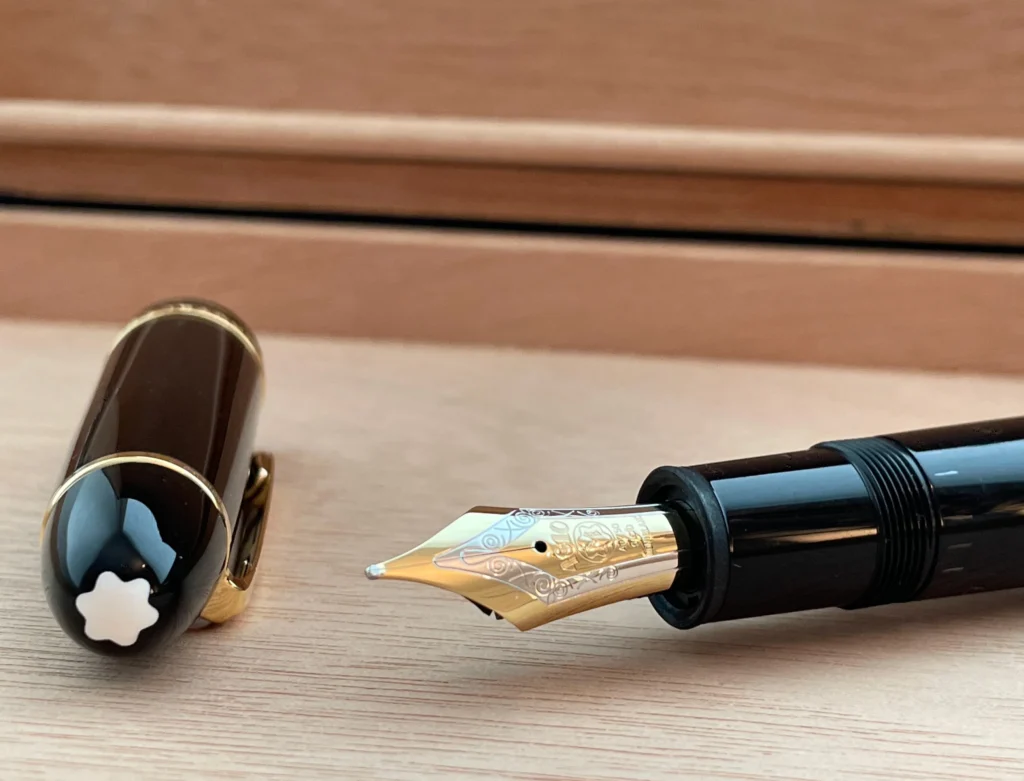Philip Hensher The Missing Ink : The Lost Art of Handwriting ( and Why it Still Matters) Macmillan 2012
Book collectors tend to buy more books than they are able to read and I am no exception to this general rule of thumb. I entertain the slightly delusional fantasy that at some point or other the time will come for this to be read. This is the case with a book I bought probably a decade ago and has been sitting on my hallway shelves acting as quite expensive wallpaper!
A weekend retreat in Wales and the need for some reading caused me to cast my eye over the spine of a shelf of books and Hensher was dropped into the bag. Oddly, I remember where the source of the purchase. It was Amazon which delivered it quickly and at a discount, which sometimes I miss, but remain determined not to use again. I also remember why I bought it! A friend of mine complimented me on the thoughtfulness of a postcard that I had sent following a difficult period of life for her but said with characteristic candour : ‘ it was a lovely thought but James, your handwriting is illegible – it took me ages to decipher!’
Hensher shows his reader over 29 carefully crafted reflections that our attitude to our own handwriting is a mixture of shame and defiance. He asks his reader to consider whether handwriting is a skill whose time has passed. This is a book about the history of handwriting and how it has shaped us. It is a book about some of the characters that have influenced the development of handwriting. It is a window into the Victorian idealists and modern educational reformists. They argued that the style in which we write influences the way we learn, behave and communicate. Chapter 4 is an enchanting and informative history of handwriting. We learn about how we might hold the pen, the particular style of handwriting by the French. We are also asked what our handwriting says about us. If someone looked at your handwriting. What impression would they have of you?
I was intrigued to ask myself when and where I learned to write. It must have been at Junior School. I can’t remember how we were shown to write but I do have a sense that my handwriting has evolved into a particular style down the decades. Think for yourself when you last lifted a pen or pencil. We do our shopping notes on our iPhone. When we have to abandon a keyboard in favour of a pen, sometimes the result is both sloppy and illegible. Technology seems to have ruined our collective handwriting ability. The skills we must acquire in the digital age are typing and texting.
This book asks us to think about how handwriting does matter and invites us to brush up on our writing skills. Cards are written to celebrate moments in the life span. We write and to express our love and concern when there are tough moments or we face the loss of friends or loved ones. We make reminder notes. Sometimes a letter to a friend that we have not been in touch with for a while. Or a thank you note to expresses our gratitude. These handwritten notes make an enormous amount of difference. Writing matters and so our handwriting matters too.
The heart of the argument for Hensher is that “ink runs in our veins, and tells the world what we are like”. Handwriting, he says “registers our individuality, and the mark which our culture has made on us. It has been seen as the unknowing key to our souls and our innermost nature. It has been regarded as a sign of our health as a society, of our intelligence, and as an object of simplicity, grace, fantasy and beauty in its own right.” This reader agrees and is determined to return to an improvement of his handwriting.
And here is my underused fountain pen – a present from a generous friend !


